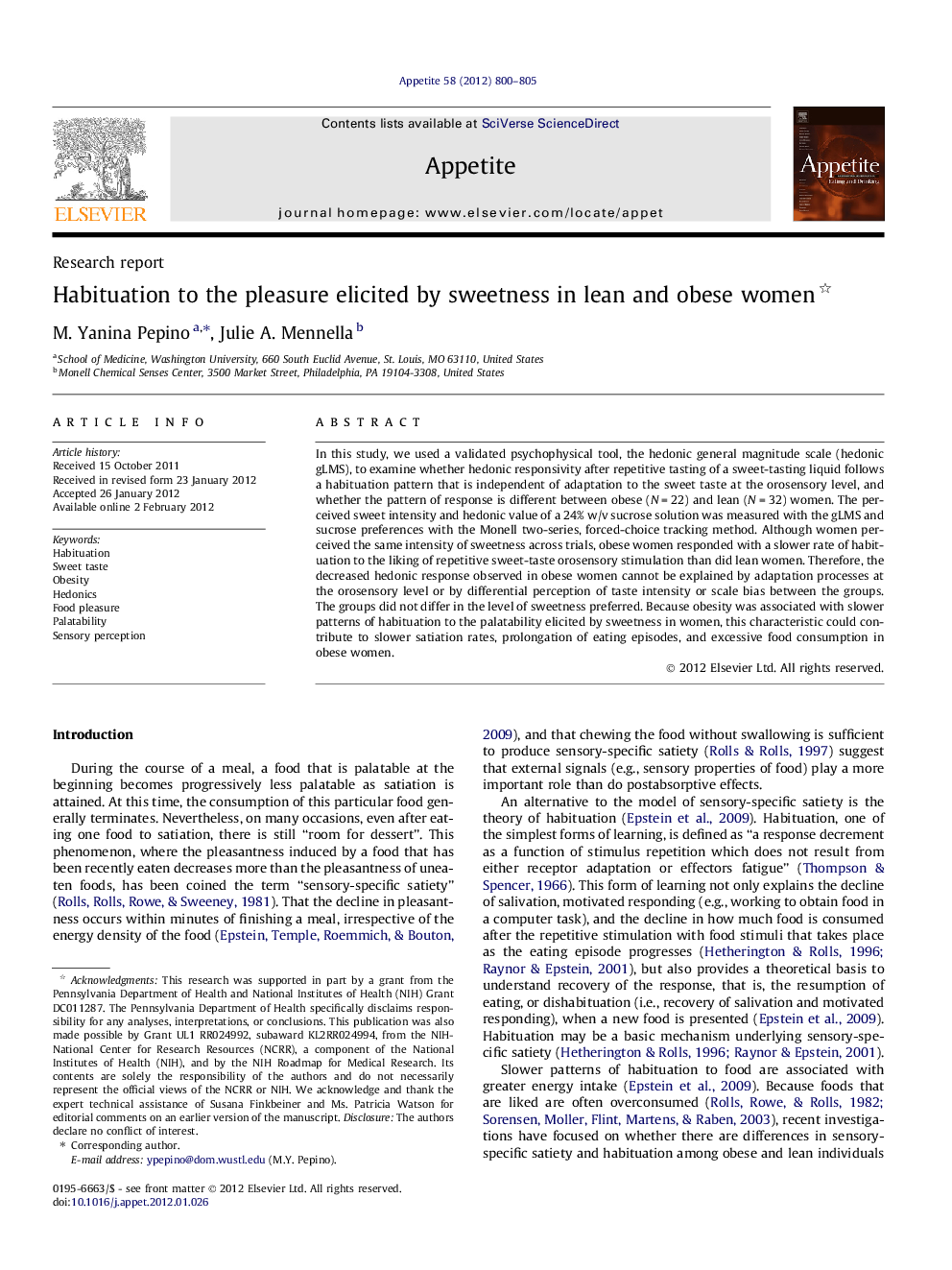| Article ID | Journal | Published Year | Pages | File Type |
|---|---|---|---|---|
| 940385 | Appetite | 2012 | 6 Pages |
In this study, we used a validated psychophysical tool, the hedonic general magnitude scale (hedonic gLMS), to examine whether hedonic responsivity after repetitive tasting of a sweet-tasting liquid follows a habituation pattern that is independent of adaptation to the sweet taste at the orosensory level, and whether the pattern of response is different between obese (N = 22) and lean (N = 32) women. The perceived sweet intensity and hedonic value of a 24% w/v sucrose solution was measured with the gLMS and sucrose preferences with the Monell two-series, forced-choice tracking method. Although women perceived the same intensity of sweetness across trials, obese women responded with a slower rate of habituation to the liking of repetitive sweet-taste orosensory stimulation than did lean women. Therefore, the decreased hedonic response observed in obese women cannot be explained by adaptation processes at the orosensory level or by differential perception of taste intensity or scale bias between the groups. The groups did not differ in the level of sweetness preferred. Because obesity was associated with slower patterns of habituation to the palatability elicited by sweetness in women, this characteristic could contribute to slower satiation rates, prolongation of eating episodes, and excessive food consumption in obese women.
► Obese and lean woman judge the sweetness intensity of a 24% w/v sucrose solution similarly. ► There are no differences in the intensity of sucrose most preferred by obese and lean women. ► Obese and lean women experienced similar levels of pleasure when first tasting a sweet solution. ► However, obese women experience more pleasure from repeatedly tasting sweetness than do their lean peers. ► Obesity is associated with slower patterns of habituation to the palatability elicited by sweet taste in women.
